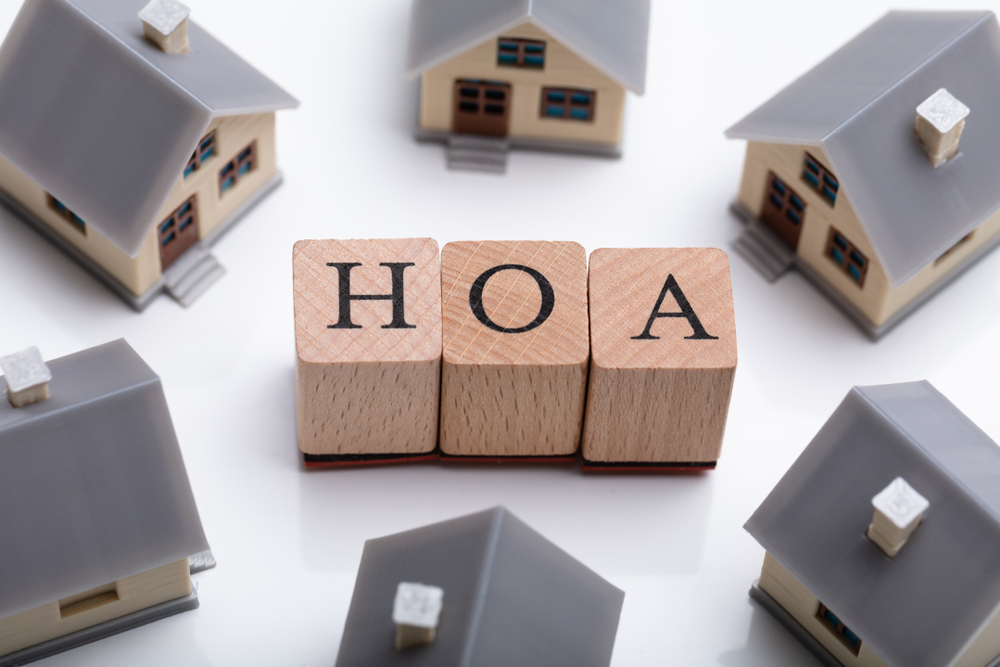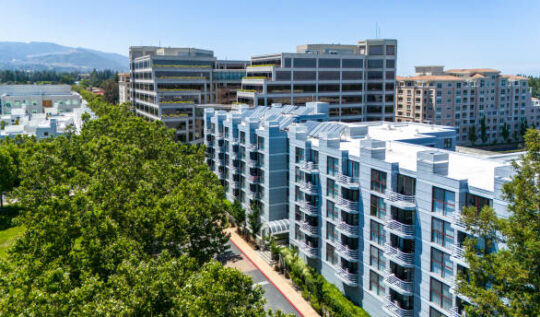Understanding the Average HOA Fees in Los Angeles
If you plan to build in Los Angeles, you need to know about HOA fees. They are monthly or quarterly payments that owners make to their association. These payments cover shared spaces, repairs, and amenities.
Table of Contents
ToggleFor developers, HOA fees can shape the success of a project. They influence buyer interest and long-term property values. At JDJ Consulting Group, we help clients plan fees that keep costs fair while covering what the community needs.
Why HOA Fees Matter for Developers and Planners
Many buyers look only at the price of the home. Developers know the cost of services matters just as much. This includes building maintenance, amenity care, and insurance.
If fees are too high, buyers may walk away. If fees are too low, the community might lack funds for future repairs. The goal is balance.
How HOA Fees Shape a Project
Market appeal – Lower fees draw interest, but not if services suffer.
Amenity choices – Tennis courts and pools can boost sales but raise costs.
Financial health – Steady fees help avoid sudden increases.
Table 1: HOA Fee Ranges and Buyer Perception in Los Angeles
| Monthly Fee Range | Common Amenities | Buyer Perception |
|---|---|---|
| $200–$350 | Landscaping, basic upkeep | Affordable, broad appeal |
| $351–$500 | Pool, gym, gated entry | Balanced, mid-market |
| $501–$1,000+ | Luxury features, concierge | Premium, niche market |
What Are HOA Fees? — Definitions and Purpose
HOA fees are payments homeowners make to cover shared costs. In Los Angeles, the average is between $340 and $388 per month. Luxury communities can go over $1,000.
What These Fees Usually Cover
Building maintenance like repairs and painting
Amenity upkeep such as pools and tennis courts
Insurance costs for common structures
Reserve contributions for upgrades or future projects
Staff, utilities, and vendor contracts
Table 2: Typical HOA Expense Breakdown in Los Angeles
| Expense Category | Description | Share of Budget |
|---|---|---|
| Amenity upkeep | Pools, tennis courts, gyms | 15–25% |
| Building maintenance | Repairs, painting, roof care | 20–30% |
| Insurance costs | Master policy and disaster coverage | 15–20% |
| Reserve contributions | Savings for future repairs | 10–20% |
| Operating costs | Staff, utilities, management services | 15–20% |
Setting the right HOA fees means balancing services with affordability. Done well, it supports property values and keeps the community running smoothly.
Average HOA Fee Benchmarks in Los Angeles
HOA fees in Los Angeles vary by community type, size, and location. For most condos and planned developments, the average is $340 to $388 a month. Luxury properties can go far higher.
Fees also depend on the number of units. A small building with ten homes may split costs between fewer owners. That can make the monthly dues higher. Large developments may spread costs over many units, lowering the fee per home.
Table 3: Typical HOA Fee Averages in Los Angeles by Property Type
| Property Type | Average Monthly Fee | Notes |
|---|---|---|
| Small condo building | $350–$500 | Fewer owners to share costs |
| Large condo complex | $300–$380 | More units, shared expenses |
| Luxury high-rise | $800–$1,500 | High-end features and premium staff |
| Single-family home HOA | $50–$200 | Covers landscaping and basic upkeep |
Differences Between Standard and Luxury Communities
A standard HOA might offer landscaping, lighting, and basic building maintenance. These are lower-cost services. They keep monthly dues in the mid-range.
Luxury communities may include rooftop decks, concierge service, and high-end fitness centers. These features raise operating costs. They also require more staff and frequent repairs. In some cases, dues in luxury developments are more than double the city average.
Developers must choose amenities carefully. Too many can push fees so high that only a small group of buyers will qualify. The goal is to design a community that balances appeal and affordability.
Main Factors That Increase HOA Fees in Los Angeles
Several trends drive fees higher over time. Some are predictable. Others come as a surprise.
Common causes include:
Rising insurance costs, especially for natural disaster risks
Funding repairs for aging buildings or worn amenities
Labor laws that raise wages for maintenance crews
Capital improvements such as new pools or elevator modernization
Higher utility rates and vendor contracts
Planning ahead can help. When developers create a clear annual budget and reserve plan, they reduce the chance of sudden hikes. This protects property values and keeps most homeowners satisfied with their community vote on future projects.
Legal and Regulatory Framework Affecting HOA Fees in Los Angeles
HOA fees in California are regulated under the Davis–Stirling Act. This law sets the rules for how associations operate, raise dues, and manage money. It applies to condos, townhomes, and single-family home communities with an HOA.
In Los Angeles, boards must follow state law when changing fees. Regular assessments can go up by a small percentage without a community vote. Larger increases often require approval from the majority of homeowners.
Associations are also required to prepare mandatory reserve studies. These studies look at common structures and estimate future repairs. They help set reserve contributions so the HOA can fund big projects without sudden fee spikes.

Key Rules for Los Angeles HOAs
Annual budgets must be shared with owners.
Reserve funds can only be used for specific purposes.
Late fees can be charged for unpaid assessments, but they are capped by law.
Foreclosure proceedings can start if dues remain unpaid for a long time.
Insurance coverage must meet state requirements for master policy coverage.
Table 4: Regulatory Limits on HOA Fees in California
| Rule or Limit | Description |
|---|---|
| Regular assessment limit | Small increases allowed without a community vote |
| Reserve study requirement | Updates at least once every three years |
| Late fee cap | Fixed dollar amount or small percentage of dues |
| Foreclosure rules | Only after a set number of months unpaid |
| Insurance coverage | Must include common areas and liability protection |
Strong compliance with these rules helps protect property values. It also builds trust between the HOA and residents. For developers, following these laws from the start can make management smoother once the community is complete.
Real-World Homeowner Experiences and Cost Challenges in Los Angeles
Many homeowners in Los Angeles feel the impact of rising HOA fees. Some report monthly dues increasing year after year. This can cause frustration, especially when insurance costs or repairs add up.
For example, some residents pay around $400 monthly, only to receive notices that fees will rise to nearly $500. This often happens because of growing insurance premiums or unexpected repairs.
Small HOAs sometimes face bigger challenges. With fewer owners, each must cover more of the costs. Switching management companies or renegotiating vendor contracts can sometimes help lower fees.
Late fees and unpaid assessments can also become a problem. If homeowners fall behind, the HOA may need to take legal action or start foreclosure proceedings to recover costs.
Despite these challenges, a well-managed HOA with clear budgets and reserve plans can keep fees stable and residents satisfied. This is why JDJ Consulting Group advises clients to plan carefully for operating costs and future repairs.
What These Insights Mean for JDJ Consulting Group’s Clients
At JDJ Consulting Group, we use these real-world lessons to guide developers and investors. Understanding HOA fees early helps avoid surprises down the line.
We help clients build accurate budgets that include all operating costs, from building maintenance to insurance costs. This approach supports steady reserve contributions.
Our team also advises on amenity planning, balancing popular features like tennis courts or rooftop decks with what buyers will accept in fees.
Clear financial planning can reduce the risk of late fees or unpaid assessments, protecting property values and community harmony.
By working with JDJ Consulting Group, developers gain a strategic partner who ensures HOA fees fit both the market and long-term goals.
Best Practices for Managing HOA Fees in Los Angeles Developments
Managing HOA fees well is key to a thriving community and happy residents. At JDJ Consulting Group, we recommend several strategies to keep fees fair and predictable.
Build Sustainable Reserve Funds
Consistent reserve contributions ensure money is available for future repairs and capital improvements. This avoids surprise special assessments that upset homeowners.
Transparent Budgeting and Community Engagement
Regular communication about the annual budget and cost drivers builds trust. Involving residents in budgeting decisions can help align HOA fees with community goals.
Strategic Amenity Planning
Choosing amenities carefully balances appeal with operating costs. Features like tennis courts or concierge service add value but also increase fees. Smart design considers what buyers want without overburdening them.
Use Competitive Vendor Pricing and Skilled Management
Negotiating vendor contracts and hiring experienced management companies like FirstService Residential can reduce operating costs without cutting quality.
Plan for Insurance and Labor Law Changes
California’s rising insurance costs and wage standards affect HOA fees. Planning ahead helps absorb these increases without shocking residents.
By applying these best practices, developers can create communities with strong finances and satisfied homeowners.
Conclusion: Balancing Value, Costs, and Community Health with HOA Fees
HOA fees are more than just monthly payments. They are the foundation for maintaining property values, funding future repairs, and supporting the lifestyle homeowners expect.
In Los Angeles, understanding the average HOA fees and their drivers helps developers design better communities. It also helps homeowners know what to expect and plan accordingly.
At JDJ Consulting Group, we guide clients through this complex landscape. From budgeting and reserve planning to amenity selection and regulatory compliance, we help you balance costs with community goals.
If you’re planning a development or managing an existing community, let JDJ Consulting Group provide expert advice on HOA fees and financial planning. Together, we can build communities that thrive now and in the future.
Contact us today to learn how we can help. Call us at (818) 233-0750 to schedule your free consultation with our land use consultants.
FAQs Regarding Average HOA Fees in Los Angeles

What is the average HOA fee in the US?
The average HOA fee across the US generally falls between $200 and $300 per month. However, fees vary greatly based on location, community size, and amenities offered.
HOA fees cover many common line items, such as:
Building maintenance
Amenity upkeep like pools and tennis courts
Insurance costs, including master policy coverage
Reserve contributions for future repairs and capital improvements
Higher fees usually reflect more services and better amenities. For example, luxury communities with concierge service or rooftop decks tend to have higher dues.
What is the highest HOA fee?
The highest HOA fees can exceed $1,500 monthly, especially in luxury high-rise communities or gated developments with extensive amenities.
These fees often include:
Elevator modernization and frequent repairs
Full-time maintenance crews
High-end features such as concierge service and energy benchmarking
Comprehensive insurance policies covering natural disaster risks and liability insurance premiums
Such fees reflect the cost of providing top-tier services and maintaining common structures to a high standard.
Are HOA fees monthly or yearly in California?
In California, HOA fees are most commonly charged on a monthly basis. However, some associations bill quarterly or annually, depending on their governing documents.
Monthly fees are easier for homeowners to budget. They typically cover:
Operating costs like vendor contracts and utilities
Regular assessments, which may adjust annually based on financial planning
Funding repairs and building reserves to avoid large special assessments
HOA boards, often managed by companies like FirstService Residential, ensure fee schedules comply with state laws and community goals.
Why are HOA fees so high in Los Angeles?
HOA fees in Los Angeles tend to be higher due to several factors:
Rising insurance costs, especially liability insurance premiums and natural disaster coverage
Increasing labor laws and wage standards that raise maintenance crew expenses
Expensive operating costs tied to amenity upkeep like tennis courts, pools, and concierge services
Mandatory reserve studies requiring consistent funding for future projects and capital improvements
All these elements increase the cost of services, which is then reflected in the monthly fees homeowners pay.
Why are homes so expensive in Los Angeles?
Homes in Los Angeles are expensive for many reasons, including:
Limited land availability, especially for single-family home development
High demand driven by economic and cultural factors
Increased costs for building maintenance, energy benchmarking, and compliance with labor laws
Rising HOA fees that include funding repairs and upgrades to amenities and common structures
These costs combine to push property values higher across most neighborhoods.
1. HOA Fees Cover Operating Costs
Monthly fees pay for building maintenance, staff wages, and vendor contracts.
2. Funds Support Amenity Upkeep
Services like tennis courts, pools, and concierge service require ongoing care.
3. Reserve Contributions Fund Future Repairs
HOAs build reserves to cover capital improvements and unexpected repairs without surprise hikes.
4. Proper Planning Protects Property Values
Clear budgets and community goals keep fees reasonable and support long-term value.
Can HOA fees go up in California?
Yes, HOA fees in California can increase, but there are limits.
Small increases in regular assessments usually do not require a community vote.
Larger fee hikes often require approval from the majority of homeowners through a community vote.
Fees may rise due to higher insurance costs, more frequent repairs, or new capital improvements.
Late fees and unpaid assessments can add to the total cost if owners fall behind.
Proper financial planning and transparent budgeting can help avoid sudden fee shocks.
How much money do you need to buy a house in California?
Buying a house in California typically requires:
A down payment of 10% to 20% of the purchase price
Closing costs, which vary but can be 2% to 5% of the loan amount
Funds to cover ongoing costs like HOA fees, property taxes, and insurance
For homes in communities with HOAs, it’s important to budget for monthly fees that fund maintenance crews, vendor contracts, and reserve contributions.
What is the average price of a house in Los Angeles?
The average home price in Los Angeles ranges from $800,000 to $900,000, but prices vary widely by neighborhood and home type.
Single-family homes in desirable areas often command higher prices.
Condos and townhomes may be more affordable but usually include HOA fees to cover building maintenance and amenities.
Higher property values typically come with increased HOA fees to maintain community standards.
Is Los Angeles too expensive to live in?
Los Angeles is considered one of the more expensive cities to live in, largely due to:
High property values and rising HOA fees
Cost of services including insurance and maintenance
Wage standards that increase labor costs for maintenance crews
Expenses related to natural disaster risks that impact insurance premiums
However, many residents find value in the city’s amenities, job market, and lifestyle.
How much is the average HOA fee in Los Angeles?
The average HOA fee in Los Angeles typically ranges from $340 to $388 per month. Fees can vary based on:
The size of the community
The types of amenities such as tennis courts, pools, and gated access
The cost of services including regular assessments, building maintenance, and reserve contributions
Associations must budget carefully to cover operating costs and fund future repairs.
Is $500 HOA fee too high?
A $500 monthly HOA fee is higher than average but not uncommon in communities with many amenities or high operating costs.
Such fees often cover:
Concierge service, rooftop decks, and tennis courts
Comprehensive insurance coverage and building reserves
Frequent repairs and capital improvements
Higher fees can protect property values by ensuring the community remains well-maintained and financially healthy.
What city has the highest HOA fees?
Cities known for the highest HOA fees include luxury markets like San Francisco, Los Angeles, and Miami.
In these cities, fees often reflect:
Extensive amenity upkeep, including pools and fitness centers
High insurance costs due to natural disaster risks
Strict labor laws increasing wage expenses for maintenance crews
Large capital improvements and building maintenance projects
These factors combine to produce some of the highest monthly HOA fees in the country.





